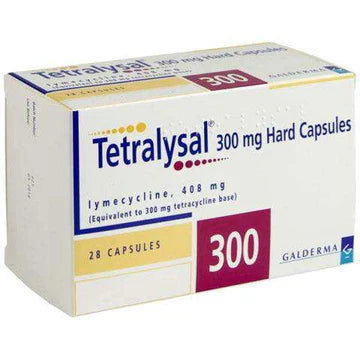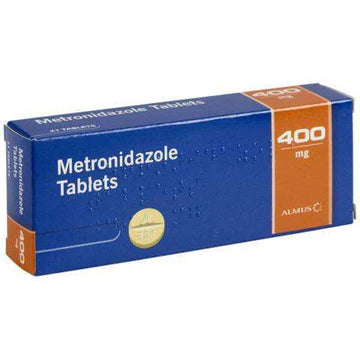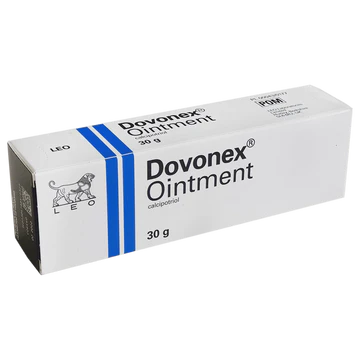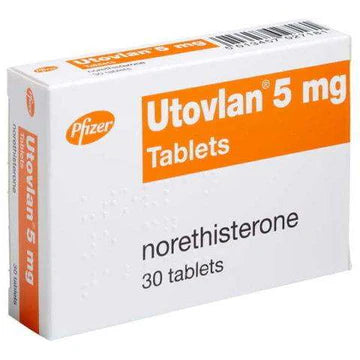What Are the Risks of Paracetamol?
.png?v=1670425279317)

Related products
Also known as acetaminophen, paracetamol is a widely used painkiller for relieving mild to moderate pain and reducing fever. Paracetamol is available without a prescription and comes in tablet and liquid form. You can buy it from most supermarkets, pharmacies and convenience stores.
Paracetamol is a common ingredient in many over-the-counter (OTC) painkillers, including:
-
Nurofen Express, Calpol Rapid and Solpadeine Max Caplets
-
Panadol Rapid Relief, Anadin Extra Rapid and Solpadeine Ultra Caplets
-
Other cold and flu remedies
It’s also available in combination with other medicines, such as codeine or ibuprofen, and it’s also present in many different types of medication.
How does paracetamol work?
Paracetamol works in the same way as ibuprofen, which is a type of anti-inflammatory painkiller. It performs this by blocking the action of an enzyme called cyclooxygenase (COX). This enzyme is involved in making prostaglandins – chemicals produced in response to injury or infection and responsible for making your body feel pain and inflammation (swelling) and raising its temperature. As an antipyretic (fever reducer) and analgesic (pain reliever), paracetamol blocks COX to stop the production of prostaglandins in the brain.
Randomized controlled trials have shown that paracetamol is much weaker than ibuprofen or aspirin in reducing pain and inflammation. However, it’s still an effective painkiller and fever reducer if taken at the correct dose and frequency. Paracetamol is also a weak diuretic, making you pee more than usual. It is one reason why people sometimes experience more frequent urination when taking paracetamol.
What is paracetamol used for?
Paracetamol is among the most commonly used over-the-counter medications. It offers a wide variety of benefits for people with certain conditions. It’s also widely used as an antipyretic (to reduce fever) and analgesic (to relieve pain). This drug is suitable for adults and young children over 12 years old, although it shouldn’t be offered to children under 16 without medical advice. Some of the most common ways of using paracetamol are the following:
-
As treatment for mild to moderate pain, such as headache, toothache, back pain and period pains (dysmenorrhea).
-
Paracetamol is often used alongside ibuprofen or aspirin to help relieve the symptoms of a cold or flu.
-
For inflammation, such as swelling caused by injury or infection.
-
Paracetamol is also used with other medicines to relieve the symptoms of hip and knee osteoarthritis, chronic knee pain, and rheumatoid arthritis, which is most appreciated by elderly patients taking paracetamol.
-
To reduce the severity of migraines, although this effect hasn’t been proven in clinical trials.
Types of paracetamol
Paracetamol can be bought over the counter (OTC) or prescribed by your doctor.
-
OTC paracetamol comes in a tablet, capsule, liquid (solution) or suppository form.
-
Prescription-only paracetamol may be given as a liquid or powder for infants.
Paracetamol can also be used as an injection when necessary. It comes in various strengths and sizes of the pack. The most common strengths are 500mg and 325mg tablets. Other names for paracetamol are:
-
acetaminophen
-
APAP
-
Panadol
-
Tylenol
Who can take paracetamol
Paracetamol is suitable for most adults. You can take paracetamol if you’re over 16 years old and have a fever or pain that isn’t caused by an infection. You can also take it to relieve mild to moderate pain in children aged 12 years and older and adults. It’s not usually recommended for children younger than 12 years old unless they have a condition that causes them to produce more uric acid than usual (hyperuricaemia).
Although paracetamol is suitable for most people, you should not take paracetamol if you have any of these conditions:
-
Chronic liver disease or damage
-
Heart failure
-
Asthma
-
Diabetes
-
Kidney failure, as it could cause an overdose
-
Toxic epidermal necrolysis (a severe skin reaction) or Stevens-Johnson syndrome (severe skin rash that affects the mucous membranes)
-
Blood cell disorders such as leukaemia (cancer of the blood)
-
Allergy to paracetamol or any of its ingredients (such as phenacetin and codeine)
This drug is also not suitable for those who are taking warfarin (a blood-thinning medicine)
It’s also not recommended for children under 16 years old who have chicken pox or flu. It’s best to talk with your GP before giving paracetamol to children aged six months to 5 years old because it could cause serious side effects in this age group. It should only be done when instructed by a doctor prescribing paracetamol.
How to take paracetamol
It will be best if you take paracetamol precisely as your doctor prescribes, who may give you occasional therapeutic doses, depending on your situation. However, this may only sometimes be possible since you can purchase this drug without a prescription at the pharmacy, supermarket or online. Because of this, you can only rely on the leaflet information that comes with it. Always read the leaflet carefully before taking it, so you know how much to have and when to take it. Here are the general guidelines on how to take paracetamol:
-
It’s usually suggested that you take paracetamol every four to six hours, up to the highest limit of eight tablets in 24 hours, but this will depend on the dose prescribed by your doctor. This dose is recommended for children over 12 years old and adults.
-
Paracetamol is available in tablet, liquid and suppository form. It can also be given to you as a patch that releases paracetamol slowly over 24 hours into your body.
-
If you are taking paracetamol for pain relief or chronic pain management, it will usually be taken every four hours until the pain is relieved. Do not take more than 8 grams in 24 hours (or 12 tablets).
-
If you have been prescribed paracetamol for a fever, it is usually given every six hours or eight hours until the fever has gone down.
-
It can also treat fevers in children and teenagers (over the age of 12).
-
Paracetamol can be ingested after having a meal or on an empty stomach (it doesn’t matter which), but avoid taking alcohol with this medication.
-
Do not exceed the recommended dose of paracetamol. You should not take more than 8g (8,000mg) of paracetamol in one day – including any amounts you may have missed by accident.
-
If you have liver or kidney problems, discuss with your doctor whether you should take this medicine.
-
If you have been taking paracetamol for over three days and experience no improvement in your symptoms, it may be time to see your GP again.
Can I take paracetamol with other medications?
Paracetamol is safe to take with most other medications. However, checking the individual drug information before taking paracetamol with any other medication is helpful. You can also consult your pharmacist or doctor if it’s safe to take with any other medicines you’re taking since some combinations can cause unwanted side effects or reduce the effectiveness of the either drug.
-
If you’re taking warfarin (a blood thinner), paracetamol increases the risk of bleeding.
-
If you’re taking other painkillers, such as ibuprofen or aspirin, paracetamol can cause an increased risk of side effects.
-
If you are taking medications for depression (such as the SSRI antidepressants fluoxetine and sertraline), paracetamol may predispose some people to suicidal thoughts.
-
Paracetamol can cause an increased risk of liver damage if taken in combination with other drugs. This includes:
-
medications for heart conditions, such as amiodarone
-
antipsychotics such as haloperidol and risperidone
-
some antibiotics including furazolidone (Furoxone), metronidazole (Flagyl) and tinidazole (Tindamax)
-
Paracetamol is also safe to take with alcohol, but it can cause stomach pain if taken with high doses of caffeine. You can also take this drug with food safely. It is advisable since ingesting it on an empty stomach can upset your stomach. It will also help to drink lots of water while taking paracetamol to avoid dehydration.
Are there side effects of paracetamol
Although generally safe, taking paracetamol can give you side effects like any other medication. This can include:
-
Stomach pain, indigestion and diarrhoea
-
Feeling sick may be more familiar with high doses.
-
Headaches, dizziness, and feeling faint may be more common in people with low blood pressure.
-
Some people may also experience drowsiness or confusion, but this occurs more in children than adults.
Clinically significant adverse effects
In rare cases, the improper procedure for taking the drug can cause clinically relevant adverse effects, which can include:
-
Loss of consciousness, which a coma may follow
-
Clinically significant liver injury (hepatoxicity) and kidney damage can cause jaundice, fluid around the lungs and brain, and bleeding from your stomach or gut.
-
Severe stomach pains, which can spread to your back or chest
-
A feeling of being sick that won’t go away even when you vomit
-
Clammy skin and cold hands and feet may happen because your liver cannot process paracetamol properly.
-
Kidney failure is another rare but severe complication.
-
Severe allergic reactions can be fatal. Some people who have taken paracetamol have developed a severe allergic reaction called anaphylactic shock or anaphylaxis, which causes breathing problems and swelling of the face and throat. It is a painful condition and requires immediate medical attention.
Overdose
Taking too much paracetamol, known as an overdose, can be dangerous. Paracetamol overdose can occur if too much of it is taken at once or if someone takes more than the recommended amount over time. Its effects can be severe and even fatal. Call for medical help quickly and get the proper treatment to save your or another person’s life. Taking paracetamol above the recommended dose can:
-
Cause kidney failure
-
Cause death, mainly if it occurs in individuals who are chronic alcoholics
-
Lead to liver damage, which can cause brain swelling (cerebral oedema)
Paracetamol also affects the brain’s temperature control centre, which is part of the hypothalamus in the brain. This area controls your body temperature and makes you feel hot or cold based on what it senses from your skin. When paracetamol is taken at doses higher than recommended (such as when taken for a long time), it can stop this centre from working correctly and cause high fevers or sweating.
Seek immediate emergency attention if you notice the following signs of paracetamol overdose:
-
yellow skin or eyes
-
nausea and vomiting
-
diarrhoea
-
trouble breathing or chest pain
-
high fever (above 39°C)
-
muscle weakness and pain
-
confusion, drowsiness or a feeling of being drunk
If you suspect that you have taken too much paracetamol and are worried about the effects, seek medical help immediately.
To determine your heart health, take this reliable test.
Paracetamol and pregnancy
Understanding the risks of paracetamol use in pregnancy is as important as in regular people and those with acute and chronic pain.
Pregnant women ingesting paracetamol do not necessarily predispose their babies to health risks. There is no relationship found between paracetamol use during pregnancy and neurodevelopmental disorders. Prenatal exposure to paracetamol was also not associated with an increased risk of lower birth weight, preterm birth or having a small for gestational age baby.
The evidence that paracetamol routinely causes foetal malformations is inconclusive. While this study raises concerns about using paracetamol for acute pain relief in late pregnancy, it does not provide sufficient evidence to change clinical practice.
In addition, recurrent symptomatic respiratory infections, including influenza and pneumonia, are a common cause of illness in pregnancy. Although the evidence remains inconclusive, paracetamol is thought to reduce the duration of symptoms and severity of a recurrent respiratory tract infection. No evidence proves that it reduces the risk of complications, such as preterm delivery or neonatal mortality. Nevertheless, paracetamol should be considered the first-line treatment for women with recurrent symptomatic respiratory tract infections during pregnancy.
When used at recommended doses, women should be reassured that paracetamol is safe during pregnancy. In addition, women should be advised not to take more than the recommended dose and to avoid taking paracetamol after 32 weeks gestation. Women should also be encouraged to seek further advice and receive health care and excellence if they have any questions or concerns regarding their medication during pregnancy and lactation.
The takeaway
Paracetamol is a drug that people use to treat pain, fever and inflammation. In the past, it was assumed to be safe. But recently, a lot of research shows this isn’t always the case. Paracetamol can cause liver damage and even death, so taking the drug as prescribed by your doctor is beneficial.
While taking paracetamol as prescribed is important, learning how much you should take is also essential. Being responsible in taking medications is one helpful way of allowing yourself the most benefits.
To better gain information on how to protect your health, try taking this heart disease risk blood test.
Want to learn about other pain relievers? Read our articles on Co-codamol, Zapain and Solpadol.















 Rated Excellent by 26,523+ Reviews
Rated Excellent by 26,523+ Reviews